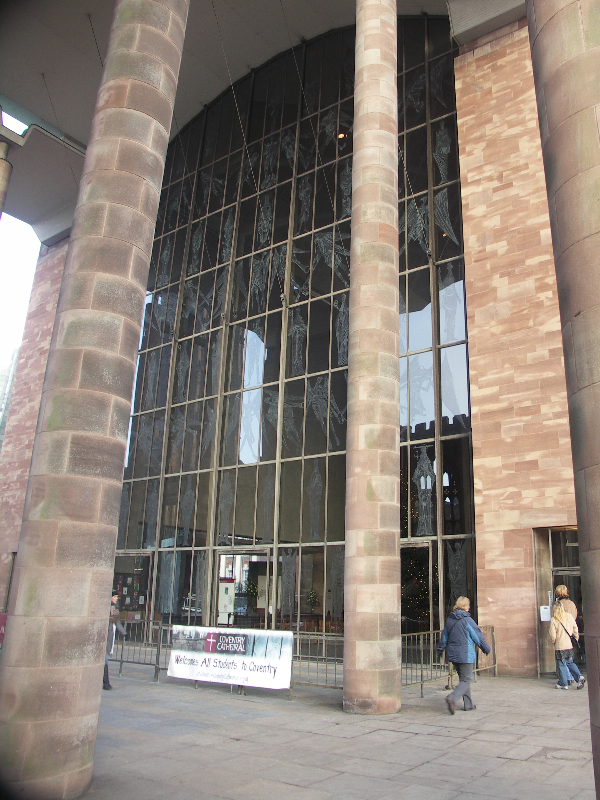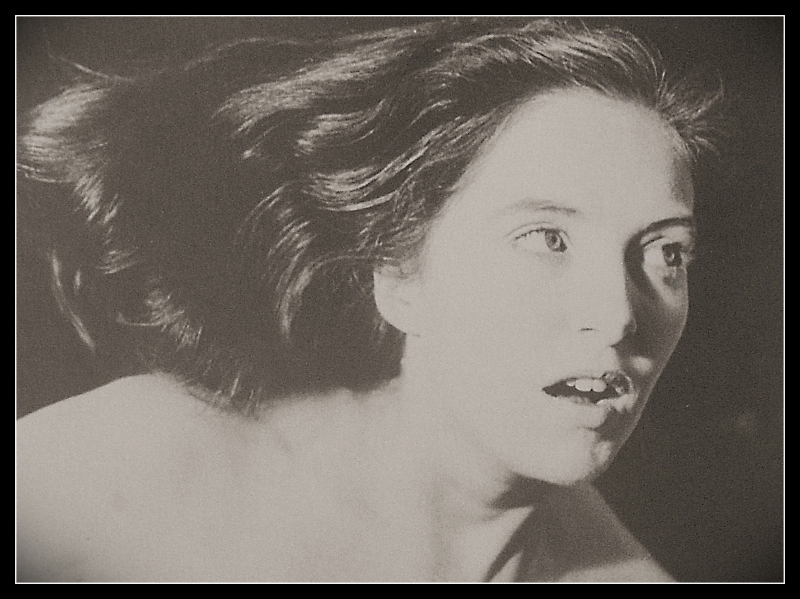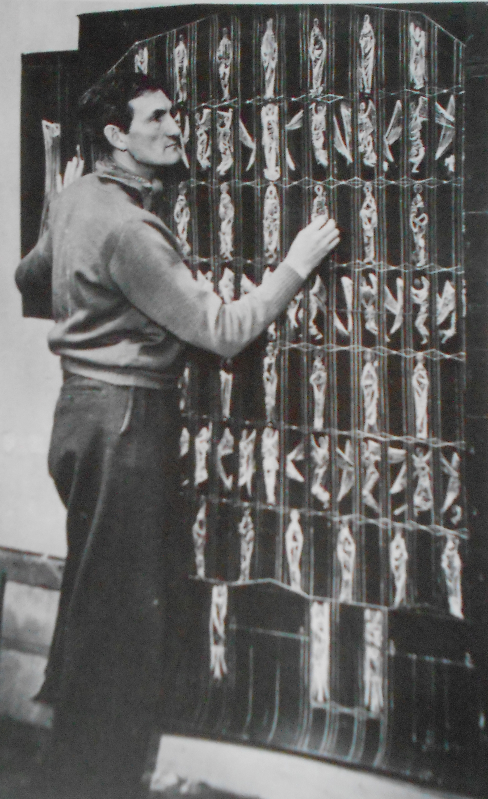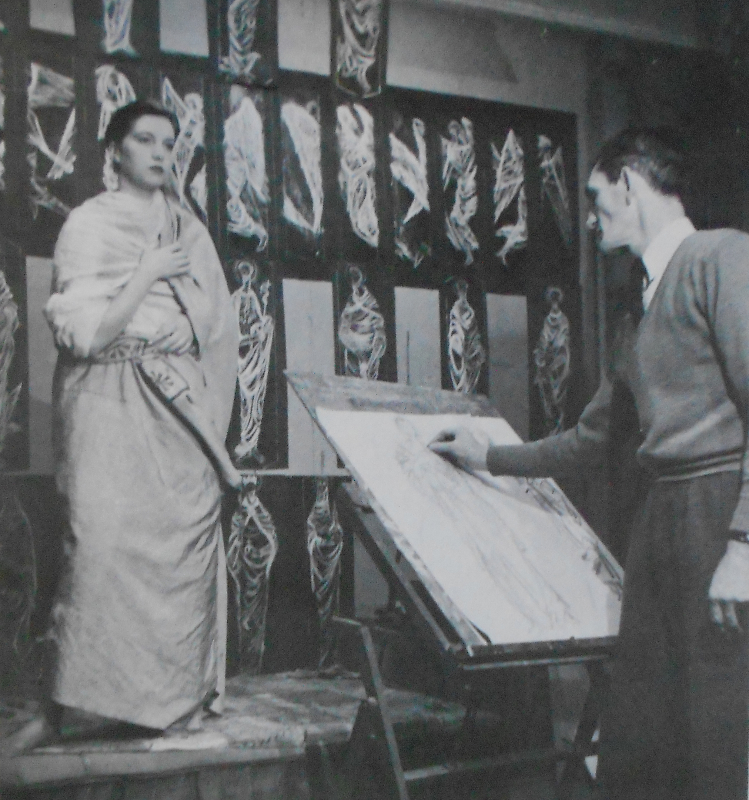Homepage » John Hutton Screen
Coventry Cathedral West Entrance Screen by John Hutton
When you are walking between the new and old Cathedrals of St. Michael’s you will see the large clear glass window of the new Cathedral known as the ‘West Screen’ which was engraved by the New Zealand-born artist John Hutton.

John Hutton and his wife Helen came to Britain from New Zealand in 1936. Both being artists they worked and exhibited together in London. John worked on mural paintings, even doing a commission for some murals in the Liner S.S. Orcades. When the war started, John joined the Army, later the 21st Army Group Camouflage Pool, where he met Basil Spence and Steven Sykes (the artist who did the Chapel of Christ in Gethsemane in Coventry Cathedral). After the war John Hutton worked for Basil Spence on the ‘Festival of Britain’ which opened in 1951. John Hutton did many murals for him in the ‘Sea and Ships’ pavilion, so they all knew each other very well.
The 21.5 metre (70 feet) high and 18.85 metre (45 feet) wide window was made to have as much clear glass as possible. It was designed by Ove Arup, one of the foremost architectural structural engineer of his time, who went on to be involved with the design and building of the Sidney Opera House. The bronze frame has main uprights which are tapered at both top and bottom, making them look very slender. They are hung from the roof by guide wires from the thickest part of the upright girders of the frame, this is to both take the weight and add rigidity in high winds.
John Hutton’s sixty six larger than life figures took 10 years to complete. The work included a lot of experimentation and he invented an entirely new glass-engraving technique. John would first draw his model Marigold draped only in a silk bedspread. Marigold would pose for all the Angels and Saints. For the male subjects, John would use his own face and head by looking into a mirror. From his pencil drawing he would draw a larger white chalk drawing on black paper the full size as required for the glass window. This made the figures seem drawn out and thin. The glass for the window would be put over the chalk drawing so that the design could be seen through it. John would grind away at the glass with his own hand-made engraving tool which was made out of an old washing machine motor fitted with a flexible drive shaft. On the end of it he could put different sizes and grades of grinding wheel. With the grinding wheel spinning he would grind into the glass. But because of the friction it got hot, so a sponge and water had to be applied to the spinning grinding wheel. Sometimes the outline of the figures would be masked off and sand blasted before the engraving.

Marigold the model who John married after divorcing his wife Helen.
At first the window was going to have Saints and Angels in every other window but John felt it too regimental, like solders in sentry boxes, so he broke it up with dancing angels.

John showed Bishop Dr. Neville Gorton two drawings, one with dancing angels and one without, leaving him to choose. The Bishop immediately chose the angels. The Bishop asked John “Do you believe in angels?” John replied ” I don’t know that I do really, but I certainly do believe in them as an enormous help in designing such a thing as this”. By having the Angels fly over many window it added a strong feeling of movement, it helped with wings and trumpets that would cut across the window frames or mullions. The trumpets also added the idea of joy, ecstasy and jubilation. Donald Hamilton noted that Hutton never allowed his angels to cross the central vertical of the window, thus giving it a sense of stability.
The Press were very interested in the various artist working for the new cathedral when it was being constructed, all artists were advised to be cautious with regards to interviews with the Press. In December 1953, Marigold was photographed, posing in a thick silk bedspread while John draw her. When it appeared in the Sunday Pictorial with the headline – ‘The Angel from a bed-sitter’.

The window is known as the West Screen, but it faces south! Most cathedrals are aligned East – West and you enter through the West doors. But Basil Spence, the architect of the Cathedral, wanted to save the old ruin as a reminder of suffering and forgiveness. So the new Cathedral was to be aligned North – South as an extension of the old cathedral, so that the two together would make one large ‘L’ shape building. But due to planning difficulties the new part could not be built onto the original building, because it would go over a historic public footpath that ran down the side of the Cathedral. The new Cathedral was built slightly away from the original but still aligned North – South. A canopy extending from the new building and almost touching the old one was added to give the effect of it being one building. But you could still see the high Altar from the old Cathedral through the windows which was made of clear glass like a glass screen with Angels and Saints floating in and out of the Cathedral. The West Screen is therefore at the Ecclesiastical West end of the cathedral, rather than the actual West end.
When the Cathedral was finished in 1962, it made John Hutton very famous and he always loved it very much. When he died he left instructions for his ashes to be buried at the foot of the window and if you look you will see a plain inscription on one of the pavement slabs close to the window, which marks the spot.



